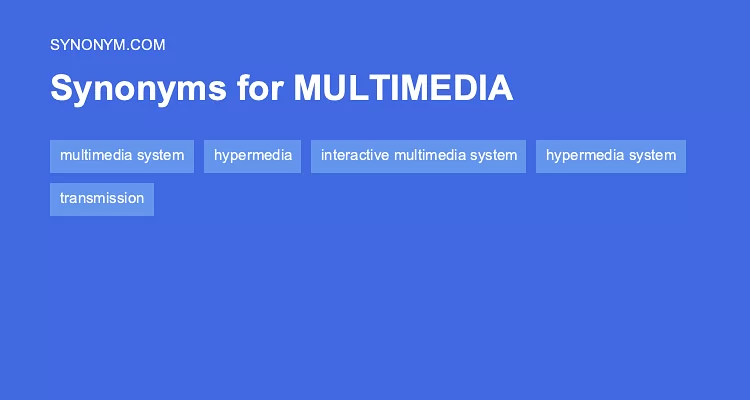Multimedia antonyms refer to the opposite of multimedia, which involves the use of multiple forms of media such as text, audio, visuals, and interactive content to convey information. The term “multimedia antonyms” encompasses the idea of using single form of media or limited types of media to convey information, as opposed to the combination of different media forms.
When discussing multimedia antonyms, it is important to consider the concept of “unimodal” or “monomedia,” which refers to the use of a single form of media such as text-only or audio-only content. This contrasts with the multi-sensory experience offered by multimedia.
Another antonym for multimedia is “analog,” which refers to non-digital forms of media such as vinyl records, cassette tapes, and film photography. These analog media forms are the antithesis of the digital, multi-format nature of multimedia.
Traditional media, such as print newspapers and radio broadcasts, can also be considered as antonyms of multimedia, as they rely on a single form of media to convey information, in contrast to the multi-faceted approach of multimedia.
Furthermore, “static” media, such as a single photograph or a printed page, can be seen as antonyms of multimedia, which offers dynamic, interactive, and multi-dimensional content to the audience.
Benefits of Multimedia
Multimedia allows for a more engaging and interactive learning experience. By incorporating various forms of media such as videos, images, and audio, learners are able to engage with the material in a more dynamic way. This can lead to better retention of information and a deeper understanding of the subject matter.
Furthermore, multimedia can cater to different learning styles, making it more inclusive for a diverse group of learners. Visual learners can benefit from images and videos, while auditory learners can benefit from audio components. This can create a more personalized learning experience that meets the needs of individual students.
Challenges of Multimedia
One of the challenges of multimedia is the potential for technical difficulties. This can include issues with audio or video playback, compatibility problems with different devices, or slow loading times for large media files. These technical challenges can disrupt the learning experience and create frustration for both learners and instructors.
Additionally, creating high-quality multimedia content can be time-consuming and require specialized skills. Not all educators or instructional designers may have the expertise to produce professional-grade videos, animations, or interactive media. This can create barriers to incorporating multimedia into educational settings.
Impact of Multimedia on Traditional Learning
The integration of multimedia into traditional learning environments has the potential to enhance the overall educational experience. By supplementing traditional lectures and readings with multimedia components, educators can create more dynamic and engaging lessons that resonate with students. This can lead to increased motivation and interest in the material.
However, the overreliance on multimedia can also have drawbacks. It may lead to a decrease in critical thinking skills if students become passive consumers of media rather than actively engaging with the material. Finding a balance between multimedia and traditional teaching methods is crucial to ensuring a well-rounded and effective learning experience.
| Multimedia | Antonyms |
|---|---|
| Visual | Non-visual |
| Interactive | Non-interactive |
| Digital | Analog |
| Dynamic | Static |
SONUÇ
Multimedia antonyms are the opposite terms used to describe different aspects of multimedia content. These antonyms help to understand the different characteristics and features of multimedia, such as visual vs. non-visual, interactive vs. non-interactive, digital vs. analog, and dynamic vs. static. Understanding these antonyms can help in the analysis and comparison of multimedia elements and their usage in various contexts.



